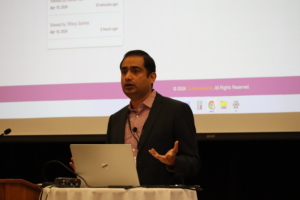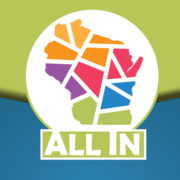BNPL already making a dent in banks’ profits
By Paul Gores
When Joe Sullivan decided to buy a Peloton home exercise machine, he pulled out a credit card to pay for it. But the salesman stopped him.
“The guy says, ‘Oh no, no. You don’t need that. We can do this. You can pay 0% interest. You can pay over time,’” Sullivan recalled.
The Peloton salesman asked whether Sullivan had a cell phone. When he said yes, the salesman texted a link to his phone — an application that took about 30 seconds to complete.
“It was approved, and within three minutes the loan documents were in my email,” said Sullivan, who is chief executive officer of the consulting firm Market Insights Inc. in Seattle. “I completed this entire transaction on my mobile phone. The whole thing took less than five minutes.”
The speed and ease of that transaction — along with the promise of 0% interest over the payment period — are among reasons banks should pay heed to the rapid rise of Buy Now Pay Later firms, Sullivan said.
There’s no question they cut into banks’ credit card business, and payment systems run by BNPL firms like Affirm (the company used in Sullivan’s 2020 Peloton purchase), Klarna, and Afterpay are especially attractive to millennials and Generation Z, who have learned to do — and expect to do — much of their business on a mobile phone.
“It’s going to be a huge disrupter. It already is,” said Sullivan. “It’s going to hit the traditional providers of consumer credit more. It means less credit card business, it means lost interchange revenue, it means less interest rate and fee income.”
While BNPL firms aren’t new, their growth has been explosive in the last few years. A 2021 report by the consulting firm Accenture said the number of BNPL users in the U.S. had increased by more than 300% since 2018, reaching 45 million active users in 2021 — users who were spending more than $20.8 billion.
“This is equivalent to 2.4% of U.S. online retail and 12% of U.S. online fashion retail,” Accenture stated.
Accenture predicted BNPL transactions would reach 10% of all e-commerce nationally by 2024.
“The growth of Buy Now Pay Later is pretty astronomical,” said Michael Emancipator, vice president and regulatory counsel for the Independent Community Bankers of America.
Emancipator cited the Accenture report as evidence.
“When you see numbers like that, it does make you sit up and take notice. And there are other entities — other startups — that are also taking notice and see that as a growth area,” he said. “I think it stands to reason that it’s only going to grow more as more startups see that as a potentially lucrative opportunity.”
The expansion of BNPL firms has the attention of bank trade associations and regulators, such as the Federal Reserve Bank of Kansas City, which published a new report on the industry in December.
The Kansas City Fed report stated BNPL is “already making a dent in banks’ profits.”
“According to McKinsey’s Consumer Lending Pools data, over the past couple of years banks lost $8 billion to $10 billion in revenue per year to fintechs offering BNPL products,” the Fed reported. The Fed also reported that a survey by C+R Research found 38% of BNPL users said BNPL would eventually replace their credit cards.
The Fed noted: “BNPL products may be more appealing than credit cards. Unlike credit cards, BNPL products can be approved without a full credit check and offer consumers flexible financing options, transparent terms, predetermined repayment schedules, and lower or no interest fees.”
Millennials and Generation Z consumers tend to eschew credit cards, given their general dislike of high-interest debt, the Kansas City Fed said. For those groups, the Fed said, point-of-sale BNPL may be a more attractive option. For merchants, BNPL products offer the ability to settle sales quickly, with BNPL providers assuming the risks of chargebacks and fraud, the Fed said.
BNPL firms already have thousands of partnerships with merchants large and small, and are seeking more. For instance, Amazon said last summer it would join with Affirm to let customers break up purchases of $50 or more into monthly installments. Here in Wisconsin, Dodgeville-based clothing retailer Lands’ End has employed PayPal’s “Pay in 4” system. With Pay in 4, a customer pays a down payment at the time of purchase, followed by three payments, each two weeks apart.
Accenture said BNPL is used most often for purchases of electronics, fashion, home goods, and health and beauty goods, but the potential for growth is huge.
To deal with BNPL’s encroachment on their lending business, some banks have engaged with BNPL fintechs in partnerships of their own, while others are trying to offer similar products to their customers.
Sullivan said no matter a bank’s business model, all banks should be addressing the rise of BNPL.
“They have to know that this is out there and not say, ‘Well, this doesn’t apply to us because we don’t offer credit cards anyway,’” he said. “That’s not the point. What they have to pay attention to is what is it that consumers are really needing, and this ease-of-use idea is really, really critical.”
While large banks with greater resources might find it easier to cope with increasing competition from BNPL firms, community banks also need to be looking into what they can do, Sullivan said.
“It’s definitely more difficult. It’s personnel and technical management. They need different people with different skill sets, they need different technologies, and that’s where community banks are behind,” he said.
Banks will need to have technology through which they can offer merchants the BNPL option, he said. It could come via firms like Amount, which has white label BNPL products that a bank could obtain.
“That’s the key here. There’s white label products for this kind of thing out there that would allow a smaller institution to get into the space,” Sullivan said. “They obviously can’t get into the Amazons and Best Buys and the Targets, but they could collaborate with a good partner to offer these BNPL services.”
Among merchants that could use a community bank’s BNPL service: doctors, dentists, and auto repair shops. Unless the customer were paying with a debit card, larger expenses like those typically would go on a credit card. But a no-interest BNPL transaction might be more appealing, and help customers budget for their larger costs.
Emancipator said his organization is concerned that BNPL is another fintech offering bank-like products without having to comply with regulations and consumer protections banks must follow.
Consumer data privacy is one possible issue, he said. Some research suggests BNPL firms are “offering these products at a loss to pretty much gobble up the consumer data,” he said.
“And then they use that for cross marketing purposes, or just simply selling that to other merchants to get a better sense of the consumers from that perspective,” Emancipator said. “Banks don’t do that.”
Last November, the U.S. House Committee on Financial Services held a hearing titled, “Buy Now, Pay More Later? Investigating Risks and Benefits of BNPL and Other Emerging Fintech Cash Flow Products.” In that hearing, Penny Lee, CEO of the Financial Technology Association, stated that BNPL is a new generation of fintech innovators that offer consumers new payment options that can reduce debt and alleviate budget stress.
“Americans on average pay approximately $1,000 per year in interest on revolving credit card debt, and credit card interest rates are amongst the highest as compared to other major consumer finance product categories,” Lee said.
In her written testimony, Lee said a survey found that BNPL users are predominantly female and younger, with millennials and Gen Z customers making up the vast majority of users. She said
the user base also includes lower-income consumers, which may reflect a lack of access to traditional forms of credit or bank services.
“BNPL products are structured to have payment terms that require consumers to pay for a purchase in a matter of weeks or a few months,” Lee said. “This contrasts with revolving credit and high interest products that may take years to pay down, blur the cost impact of a purchase, and oftentimes keep consumers in a vicious cycle of debt due to continuous interest charges or rollovers.”
Lee also asserted that the BNPL industry already is subject to “robust regulation.”
“All BNPL products are subject to key consumer protection laws and regulations, including around anti-money laundering, fair lending, credit reporting, debt collection, privacy, fair treatment of customers, and electronic fund transfers,” Lee stated. “They also are subject to similar state consumer protection laws.”
But Emancipator said BNPL firms should have to follow rules similar to the
rules banks face.
“Right now our position is more so to cast a light on these fintech players that are just growing all the time — casting a light that they need to have the same set of rules, abide by the same set of rules, that community banks do,” Emancipator said. “That’s the best way to have fair competition, but it’s also, at the end of the day, the best way that consumers are being protected.”
Sullivan said there are about 170 BNPL firms right now, and some consolidation is probable, with the strongest ones surviving.
“Banks will likely partner with fintech firms to enter the space,” Sullivan said. “And Buy Now Pay Later fintechs are going to rush to partner with banks to comply with new regulations that are undoubtedly probably going to come.”
He said BNPL is “here to stay.”
“Ultimately, regardless of regulation and consolidation, consumer demand for this kind of credit flexibility will fuel growth for years to come,” Sullivan said.
Paul Gores is a journalist who covered business news for the Milwaukee Journal Sentinel for 20 years.

















 By Rose Oswald Poels
By Rose Oswald Poels

 By Rose Oswald Poels
By Rose Oswald Poels